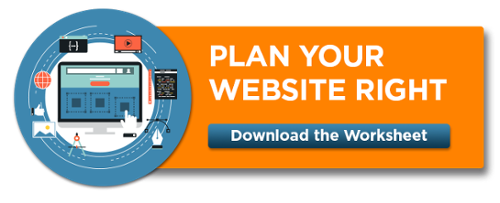"Customer journey" is a sticky term, a bit difficult to understand or define. The simplest explanation comes from SurveyMonkey, a data collection, data analysis, survey, and brand management tool for businesses.
The customer journey is the complete sum of experiences that customers go through when interacting with your company and brand. Instead of looking at just a part of a transaction or experience, the customer journey documents the full experience of being a customer.
For businesses with a strong digital presence (which includes most businesses in this day and age), customer journey is only becoming more important. Many customer journeys may begin or end off of your website, but your web presence is a critical factor in helping your customers achieve a desired outcome while also taking the next step towards buying your products or services. The problem with the process of "customer journey mapping" is that every business guides its prospect through a different customer journey. Consider just two very basic examples:
- A B2C artisan cupcake shop without an e-commerce website, relying heavily on traditional advertising word-of-mouth for traffic to their brick-and-mortar store.
- A B2B heavy equipment rental company that offers custom quotes through its website for large commercial and industrial construction jobs.
These companies exist in completely different industries. They have completely different sales goals. The cost of acquiring a new customer, and that customer's lifetime value, can't even be compared. In other words, their customers' journeys don't have too much in common from the point they enter the sales funnel to the point when they make a purchase.
But this doesn't mean that you can't refine your customer journey on the web. Because they're your customer, you already have a great idea of what their needs and desires are! By asking the right questions, looking at the right data, and seeking the right advice, you can more effectively guide your customer through a pleasant experience that will lead them to where they want to go (and where you want them to go, as well).
Here are just a few questions you can ask yourself to see if you're offering your customer an amazing journey when they interact with you on the web.
How do you define your customers?
While your customers have one huge things in common—they want your products and services. However, they’re unique in the ways that they receive and consume the information you disseminate that may result in a lead, conversion, or sale. Furthermore, you probably have repeat or high-value customers, or a customer base that you’d like to tap into more.
These customers can be broken down into "buyer personas," fictional representations that represent the way your different customers interact with your brand.

Once you’ve defined your customers, it’s time to take a walk in their shoes. When they arrive at your website, what information are they going to be looking for? Is that information provided to them in an easy-to-understand way, or will it be difficult to find?
One of the things that you want to provide your ideal customer is a pleasant experience—the feeling that they’ve accomplished what they set out to do when they began their journey (whether online or offline). Someone who feels satisfied at the end of their journey is far likelier to visit you again.
What goal(s) are you looking to achieve?
Everyone measures success differently. For example, a long sales cycle might mean that you’re looking for many more “micro conversions” (social interactions, form fills, downloads, chats, or emails) before the ultimate “macro conversion” (the sale!).
Although your ultimate goal is the sale, there are probably other goals to set before you can expect your prospect to buy.
The sale happens at the end of the journey. Does your website—or your web presence as a whole—facilitate those micro conversions? Some things you may want to consider is whether you’re providing easy-to-find, easy-to-consume information that will develop trust between you and a prospect and allow them to take that next step down the conversion funnel. You’ll also want to ensure that your site provides multiple outlets for your customer to get answers to questions they may have, whether through chat, email, or social.
What paths can your customer take?
There are (as we will explain in the next point) many paths to any destination. Some of these paths are quick and easy. Others are difficult and take too long. Your challenge is to ensure that your customer has multiple paths to their destination and that those paths are clear of obstacles.

Think about a “bad customer journey” experience you’ve had online. Perhaps you went to a website looking for something specific and you couldn’t find the information you needed, or weren’t able to take the action you wanted to accomplish.
Navigating a website can be extremely frustrating when customer journey isn’t taken into account. If it takes too many clicks to find what you’re looking for, if the navigation is confusing, or if there aren’t enough easy-to-follow paths to reach the desired destination, customers are likely to bounce to another website with a better user experience and a simpler, more pleasant journey.
Where does your customer journey begin and end?
Everyone’s journey is different. All those cars in a Target parking lot began at a different place, took a different path to get there, and were driven by people with different goals once they reached the store. Some of them find what they want quickly. Others have a difficult time tracking down what they’re looking for. Of course, some people won’t find what they need and will need to extend their journey to a different destination.
As we’ve said at the beginning of this post, the customer journey for some businesses begins offline and ends at a brick-and-mortar store. For others, the journey occurs entirely on the website. Most businesses, however, have multiple touch-points along the journey, and their website is one of the paths they take to achieved their desired outcome.
Consider where your customers’ journey may begin, and where it may end. Remember, just as there are multiple paths, there are also multiple start and end points. Are you making sure to take care of the customer whose journey might begin before typing your business’s name into Google’s search bar? Does your website facilitate a smooth transition to the multiple destinations they may be looking to reach?
Which brings us to the final, critical point...
Do you understand the data?
If you’re able to answer the above questions, then you’re well on your way to refining your customer journey. However, the single most important thing you have to understand to create a seamless customer journey is data.
Your website’s analytics are full of information that will help you to understand how customers are interacting with your website and whether their journey is an enjoyable or a frustrating one. How many pages does the average visitor view? What’s your website’s bounce rate? What is the duration of the average visit? How many visitors return?

You can, and should, go even deeper. Mobile experience, page load times, social interactions, and more are all valuable data points that will help you refine your customer journey. Focus groups and mystery shoppers can help you iron out wrinkles you may have missed. Services like Hotjar can allow you to see heatmaps, visitor recordings, conversion funnels, and form analysis.
This information is invaluable when determining what parts of your site are easily navigable and what parts are confusing.
Any obstacle that prevents your customer getting from point A to point B is known as friction. The less friction, the better the journey. Data gives you the power to reduce friction and increase customer satisfaction.
Know what you don't know.
Customer journey is a simple concept, but in execution, it can often be daunting. There are many, many things you can do on your own to improve customer journey on your website. However, there are times when calling an expert to help you fill in the details is the best chance you’ll have at success.
Business owners (and employees) can often be “too close” to their brand, meaning they don’t see customer journey the way their customers do. An unbiased look from outsiders who can view things through the eyes of your customer will help you to see areas where you’re doing a great job and ones that may need some improvement.
The good news is, with an awesome customer journey, not only will you generate more conversions and sales—you’ll create an enjoyable experience, have satisfied customers, and develop affinity toward your brand. Our marketing agency in Lancaster, PA can help. We help small businesses with website design, SEO marketing, and search engine optimization.

